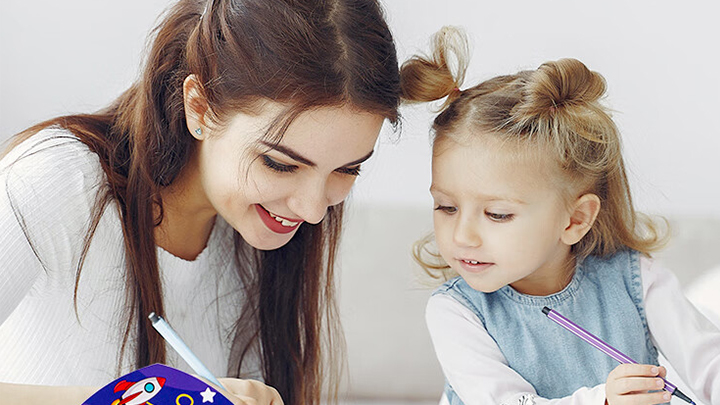How to Choose the Right Stationery for Children: A Comprehensive Guide
Selecting the right stationery for children is not just about buying tools for writing or drawing; it’s about equipping them with the resources that support their creativity, learning, and organization. With a wide array of options available, it can be challenging to decide what’s best for your child. This guide will help you navigate the essentials of choosing the right stationery for children, focusing on functionality, safety, and enjoyment.
1. Consider Age and Developmental Stage
Children's stationery needs vary greatly depending on their age and developmental stage:
Preschoolers (Ages 3-5): At this stage, children are developing their fine motor skills. Look for jumbo crayons, markers, and pencils that are easier for small hands to grip. Art supplies like finger paints and large drawing pads encourage creativity and help with hand-eye coordination.
Early Elementary (Ages 6-8): Children start learning to write and need basic writing tools such as pencils, erasers, and beginner-level pens. Wide-ruled notebooks and primary-lined paper help them practice writing neatly. Colorful and fun designs can keep them engaged.
Upper Elementary (Ages 9-11): As children become more independent, they need more advanced tools for writing, drawing, and organizing. Fine-tipped markers, colored pencils, and regular pencils become essential. At this stage, children might also need rulers, glue sticks, and scissors for school projects.
Middle School and Beyond (Ages 12+): Older children require more sophisticated stationery, such as mechanical pencils, highlighters, and binders. They may also start using planners to keep track of assignments and schedules.
2. Safety and Non-Toxic Materials
Safety is paramount when choosing stationery for children:
Non-Toxic Materials: Ensure that all products, especially art supplies like markers, crayons, and paints, are labeled as non-toxic. This is crucial as young children often put things in their mouths.
Safety Features: For younger children, choose scissors with rounded tips and rulers without sharp edges. Avoid small parts that could be a choking hazard.
Quality Brands: Opt for reputable brands known for their commitment to safety and quality. Brands like Crayola, Faber-Castell, and Staedtler often meet rigorous safety standards.
3. Durability and Quality
Children can be rough with their belongings, so durability is key:
Sturdy Construction: Choose items made from durable materials that can withstand daily use and handling. For example, look for pencils that don’t break easily and notebooks with strong bindings.
Long-Lasting Supplies: High-quality products may cost more initially but often last longer. This includes pens that don’t leak, crayons that don’t break easily, and markers that don’t dry out quickly.
4. Functionality and Ease of Use
Practical and easy-to-use stationery can make learning and creativity more enjoyable:
Ergonomic Design: Select items that are ergonomically designed to fit comfortably in small hands. This includes pencils with grip zones and scissors that are easy to control.
Portability: Consider lightweight and compact stationery that can be easily carried in a school bag or backpack. Pencil cases with multiple compartments help keep supplies organized.
Easy Maintenance: Choose washable markers and crayons, which are easier to clean up. Look for glue sticks that are less messy than liquid glue.
5. Encouraging Creativity and Learning
Stationery can be a powerful tool for fostering creativity and supporting educational development:
Art Supplies: Provide a variety of art supplies, such as colored pencils, watercolors, and sketch pads, to encourage creative expression.
Writing Tools: Fun and engaging pens, pencils, and notebooks can make writing more enjoyable. Look for themed designs or bright colors that appeal to your child’s interests.
Educational Tools: Consider items like educational workbooks, planners, and organizers that help children develop organizational skills and manage their schoolwork effectively.
6. Personalization and Fun
Allowing children to personalize their stationery can make the experience more enjoyable and foster a sense of ownership:
Customizable Items: Look for customizable notebooks, stickers, or labels that children can decorate and make their own.
Favorite Characters and Themes: Choose stationery featuring their favorite characters, colors, or themes, which can make the items more appealing and enjoyable to use.
7. Budget-Friendly Options
While quality and functionality are important, it's also possible to find great stationery within your budget:
Bulk Purchasing: Buying items like pencils, erasers, and notebooks in bulk can be more economical and ensure you have spares on hand.
Sales and Discounts: Take advantage of back-to-school sales or clearance events to purchase high-quality items at lower prices.
Reusability: Choose items that can be reused or refilled, such as mechanical pencils with replaceable leads or refillable pens, which can save money in the long run.
8. Environmental Considerations
Teach children about sustainability by choosing eco-friendly stationery options:
Recycled Materials: Opt for products made from recycled or sustainable materials, such as notebooks with recycled paper or pencils made from reclaimed wood.
Minimal Packaging: Look for items with minimal or recyclable packaging to reduce waste.
Reusable Items: Encourage the use of reusable items, such as refillable pens and reusable water bottles, to minimize environmental impact.
Conclusion
Choosing the right stationery for children involves balancing safety, functionality, quality, and fun. By considering your child's age, preferences, and needs, you can select the best tools to support their learning and creativity. Whether it’s a colorful set of crayons for a budding artist or a durable notebook for an organized student, the right stationery can inspire and empower children in their educational journey.
With thoughtful selection, you can provide children with the resources that not only enhance their school experience but also foster a love for learning and creativity.




